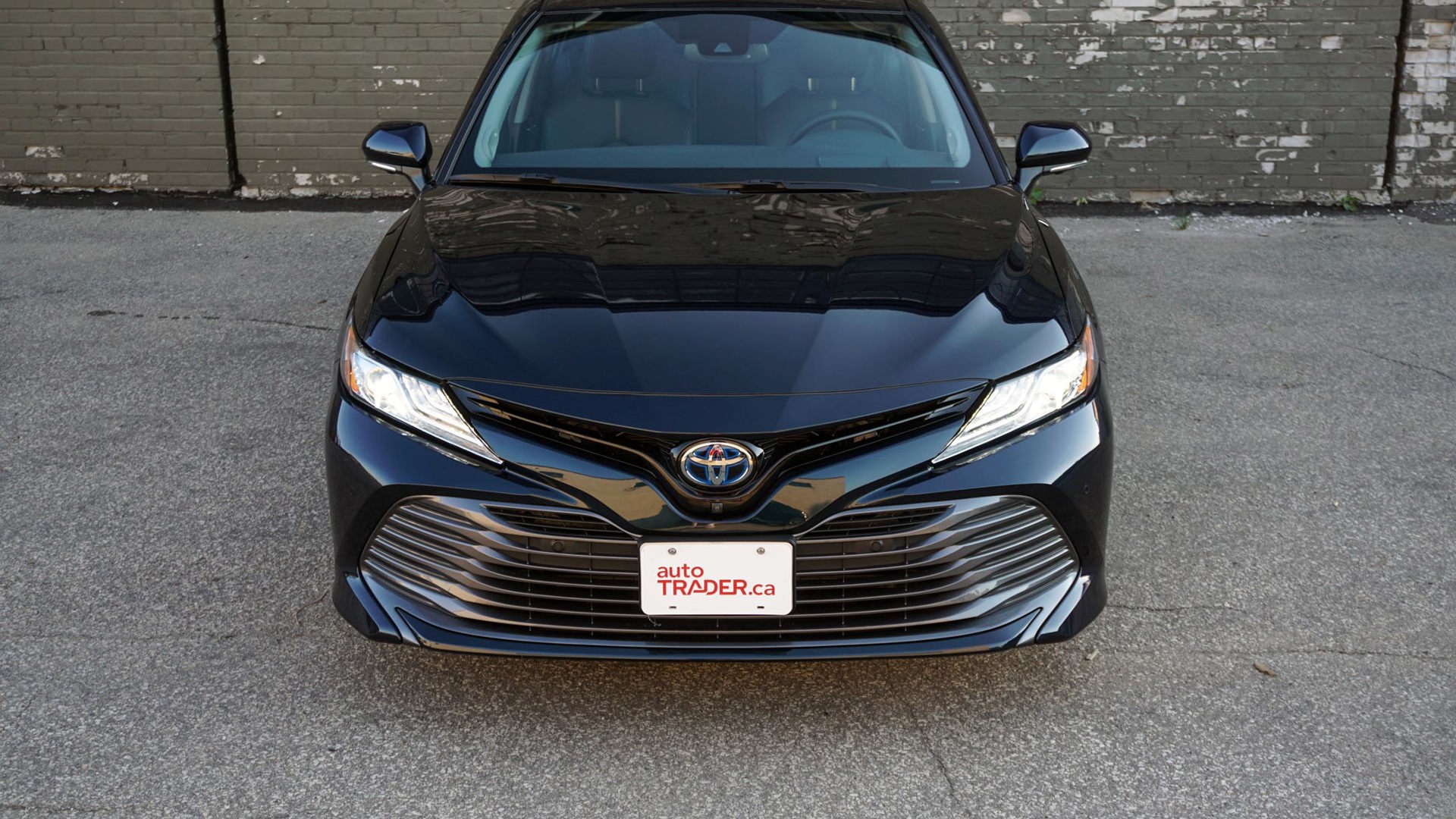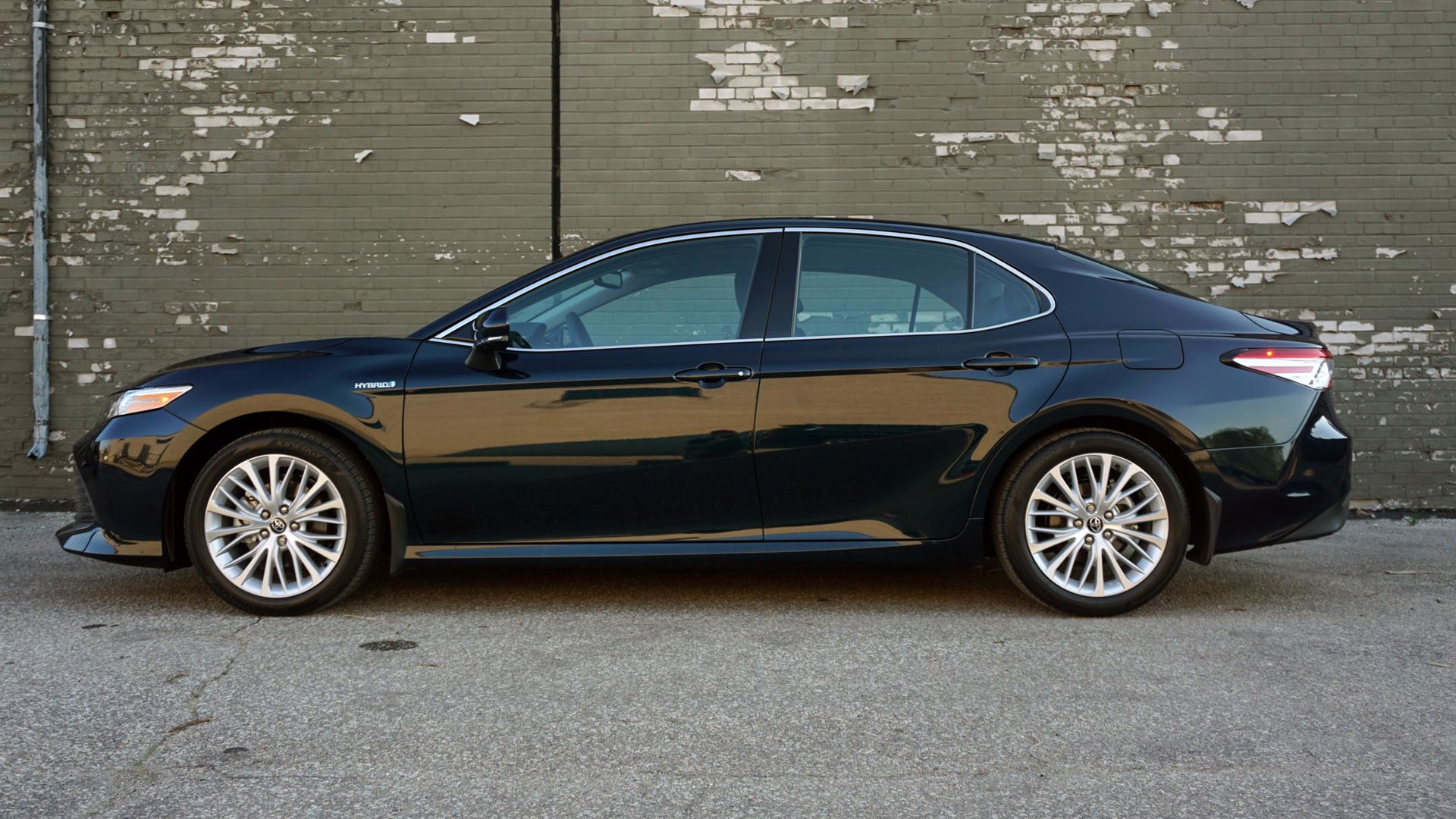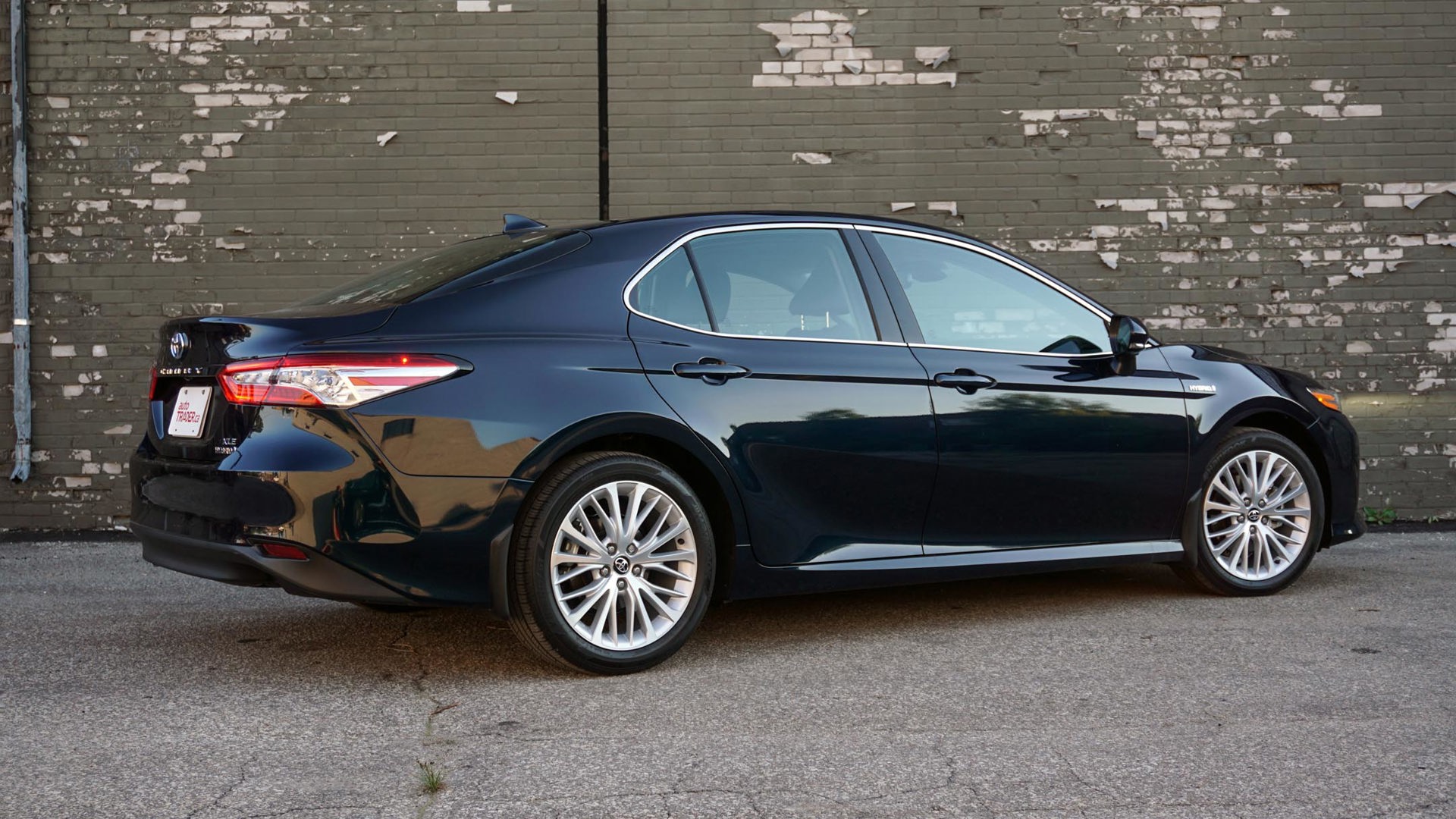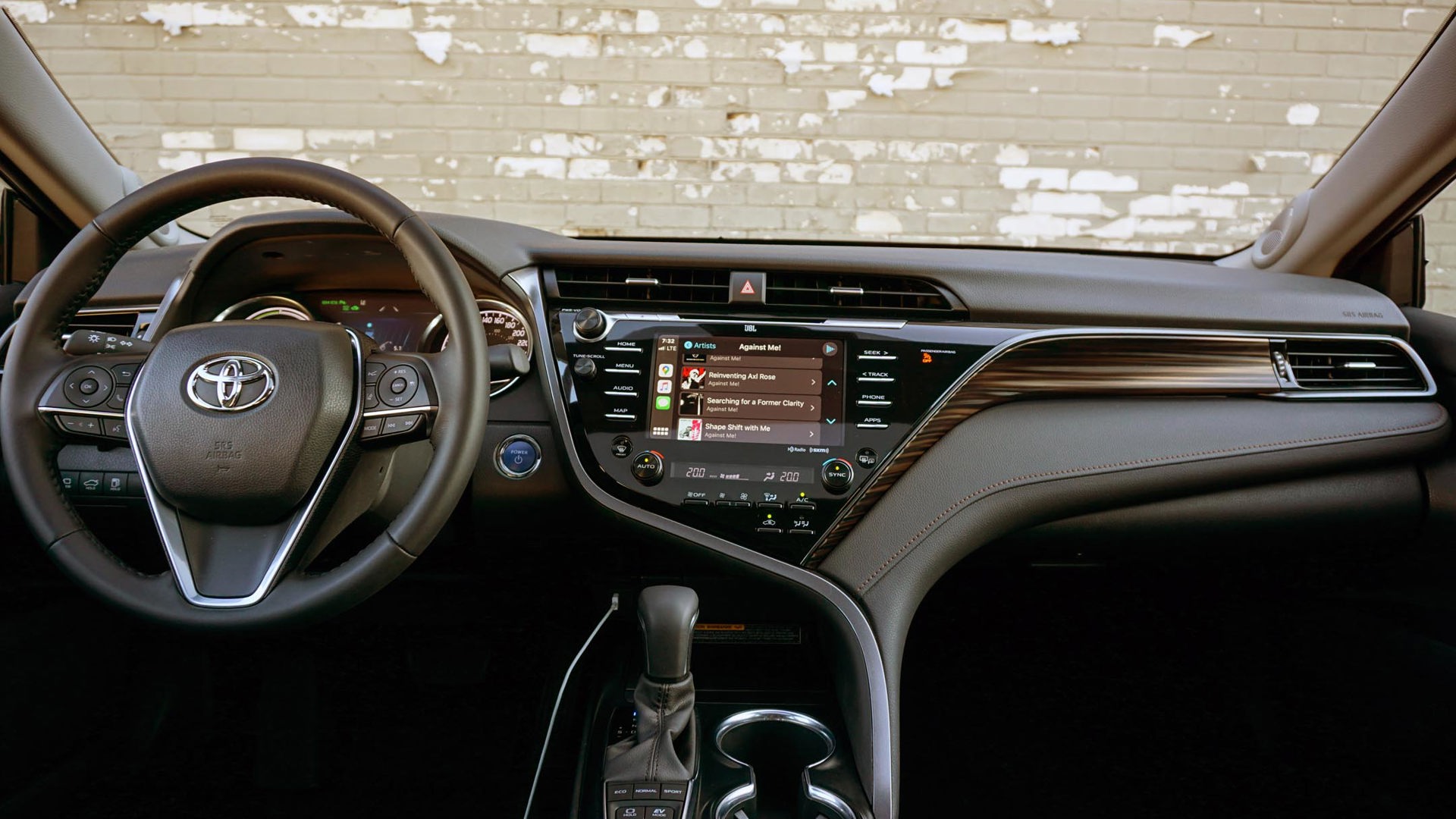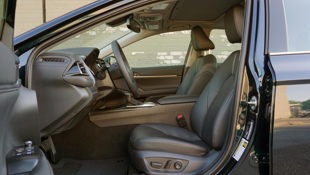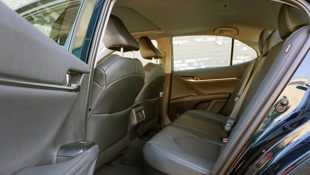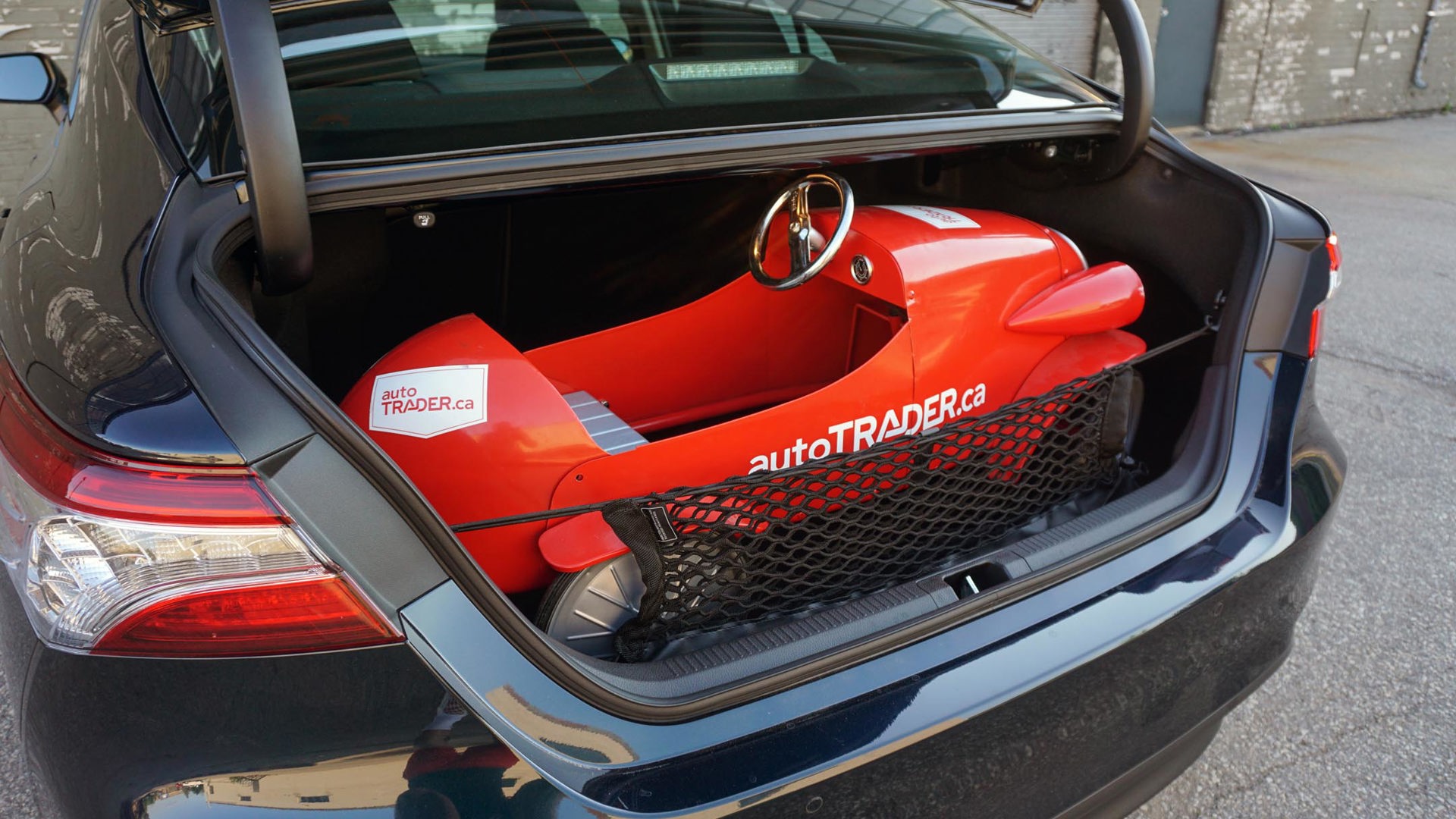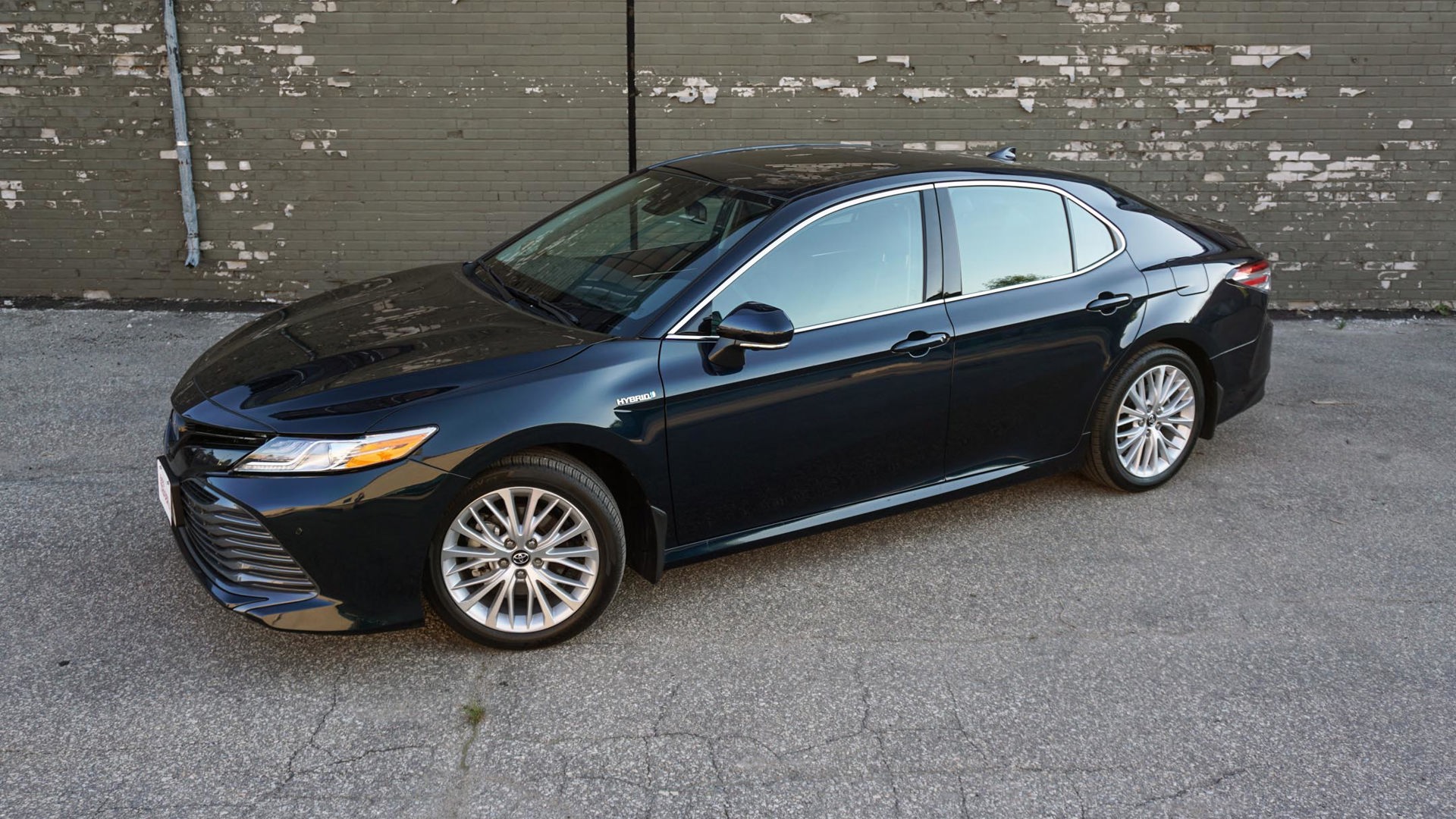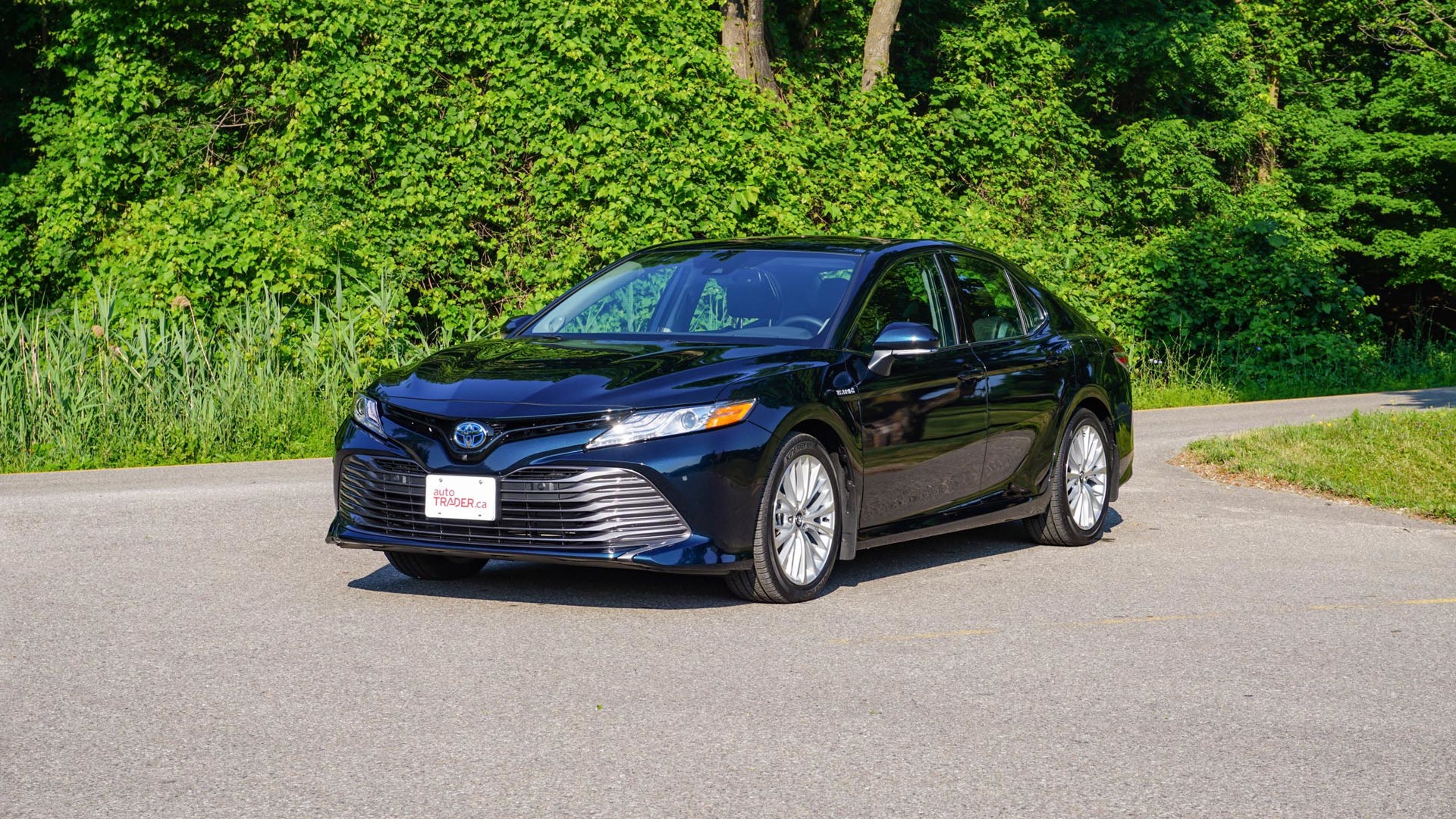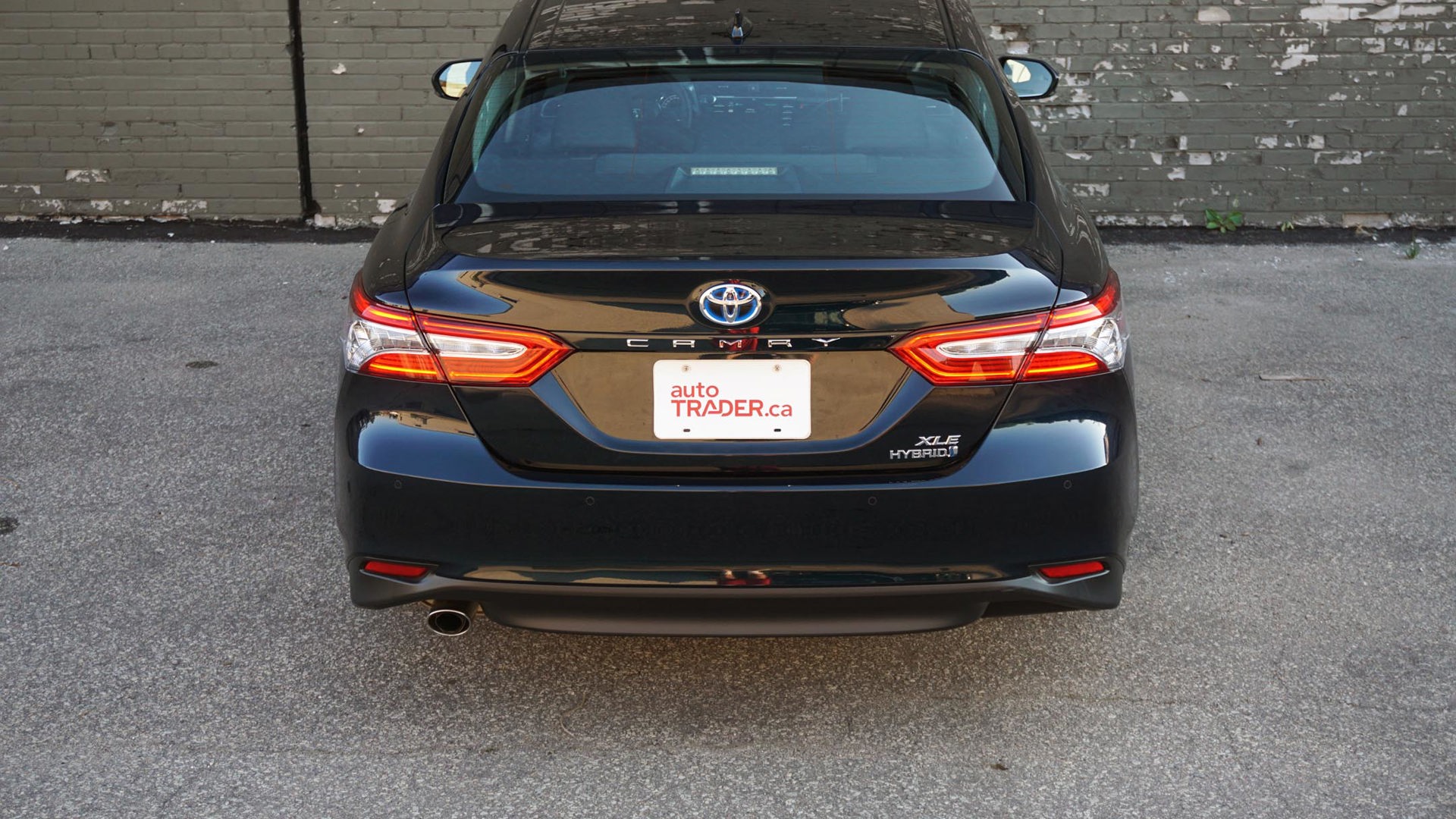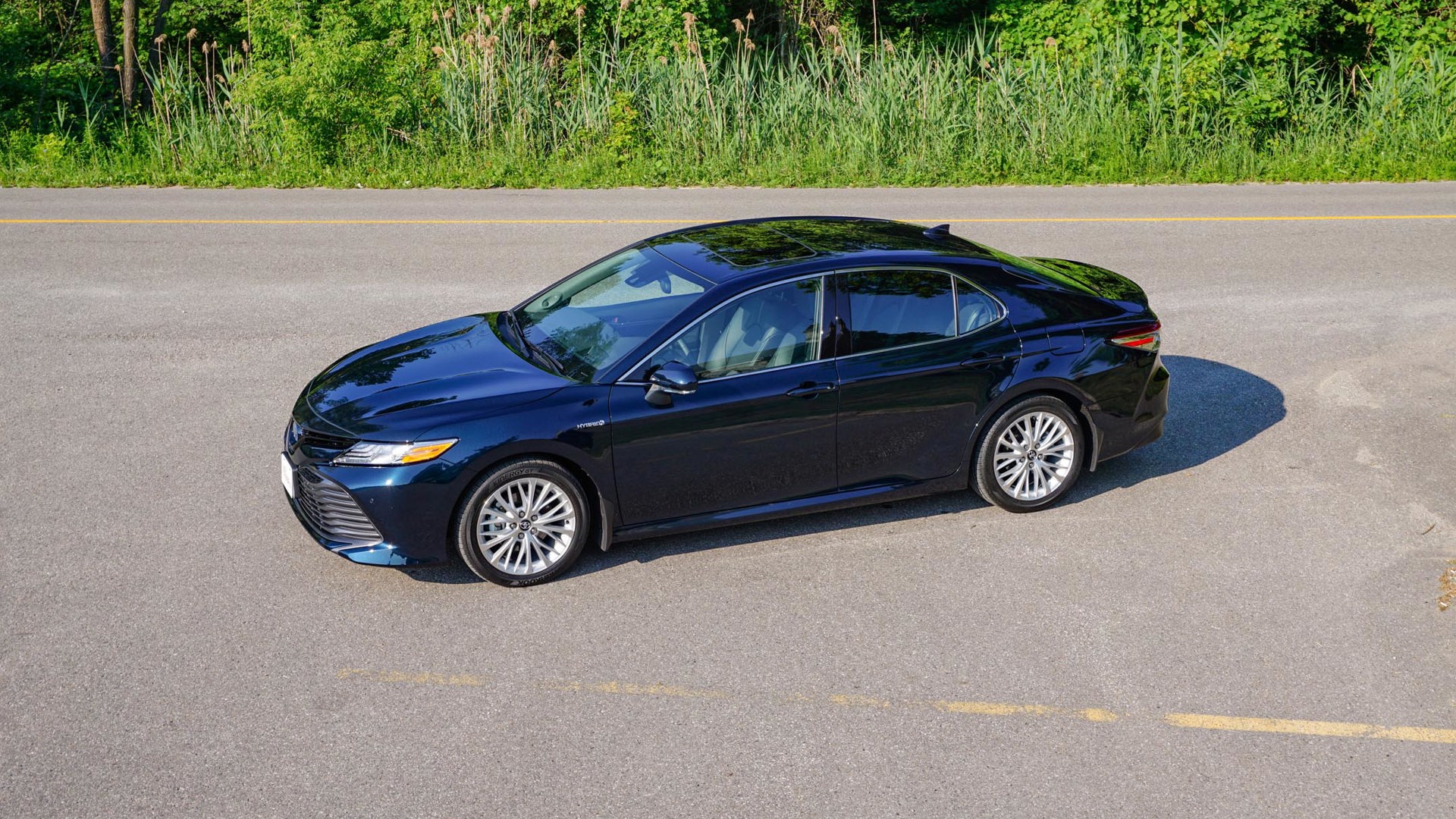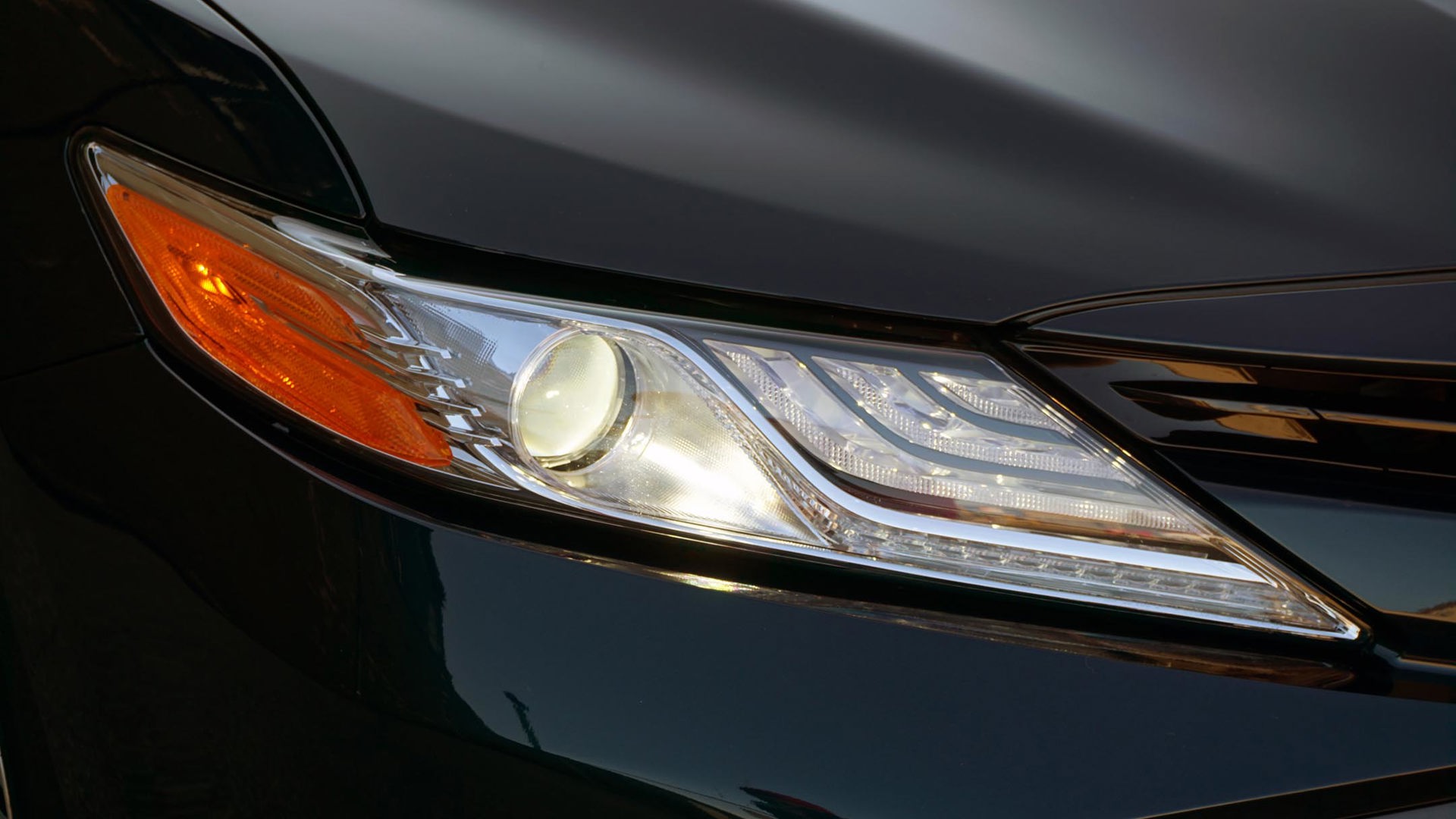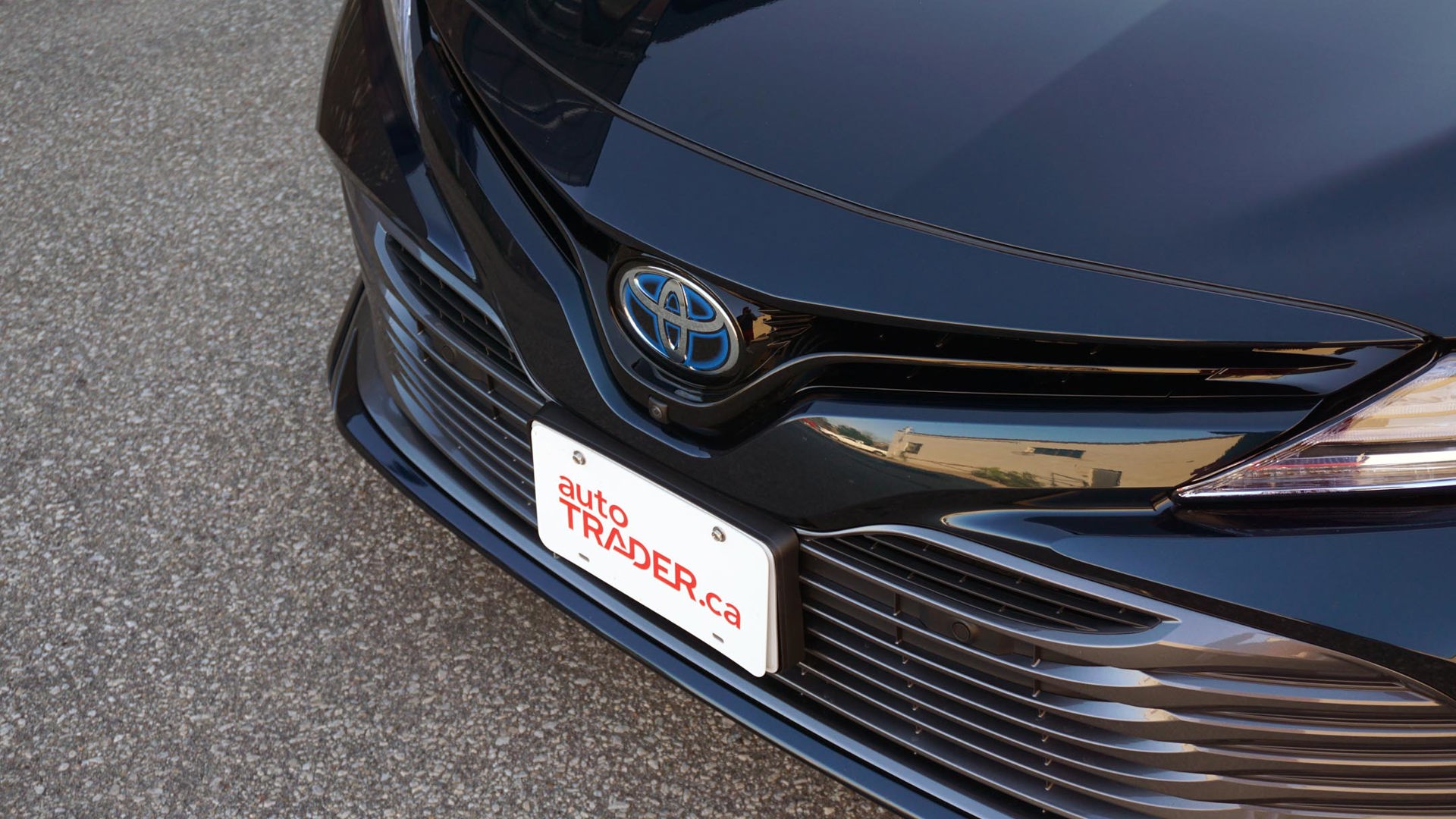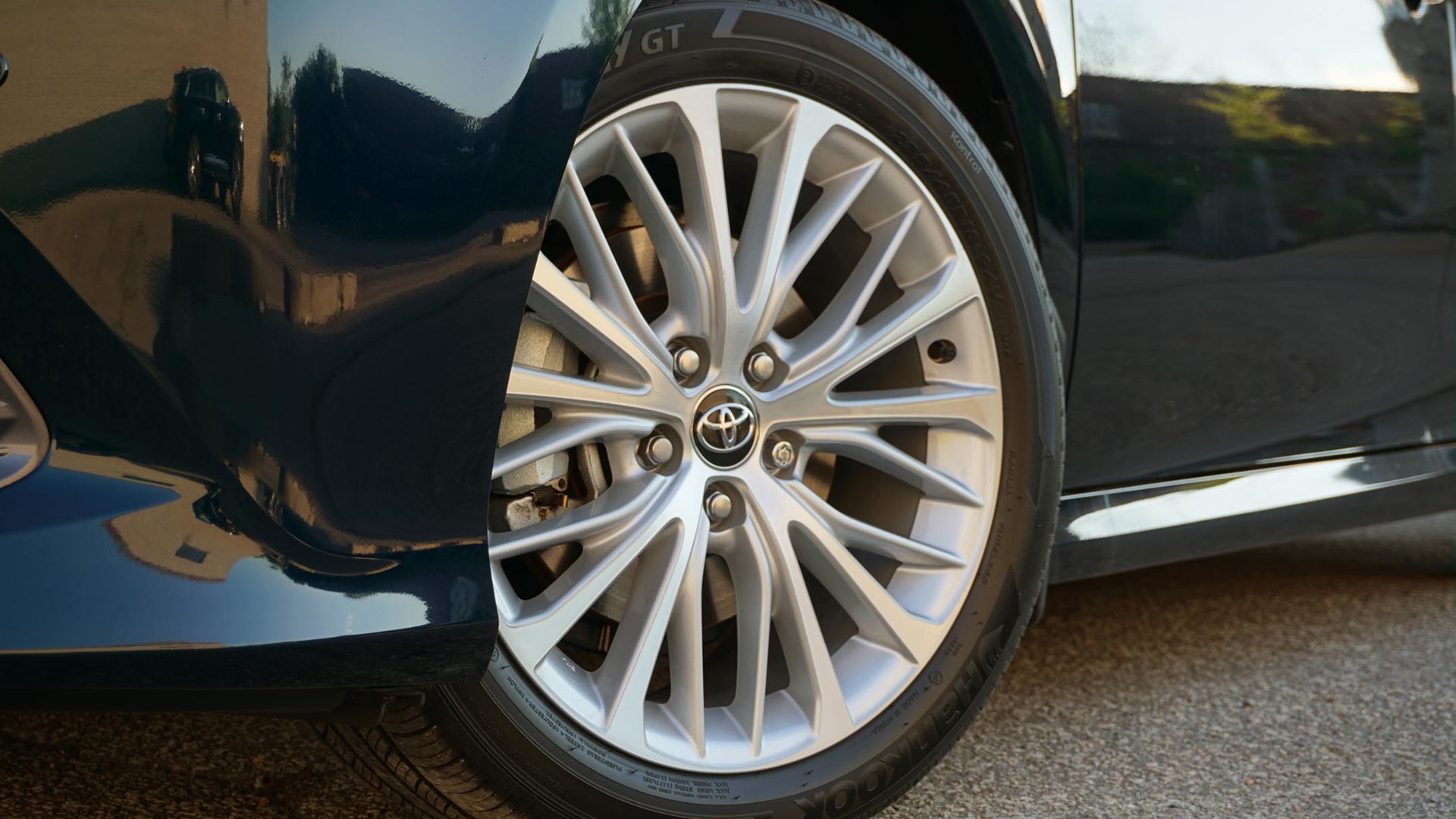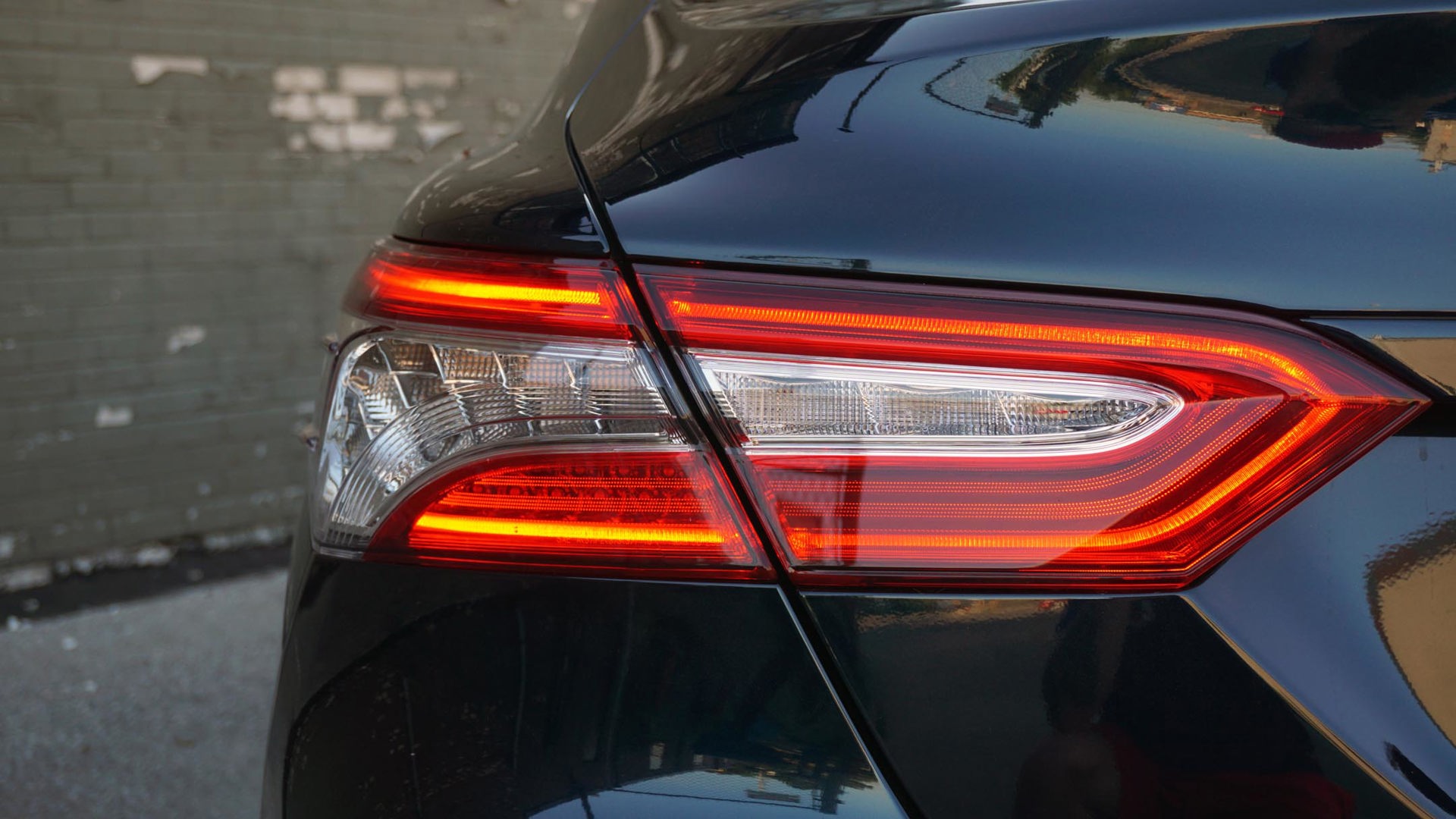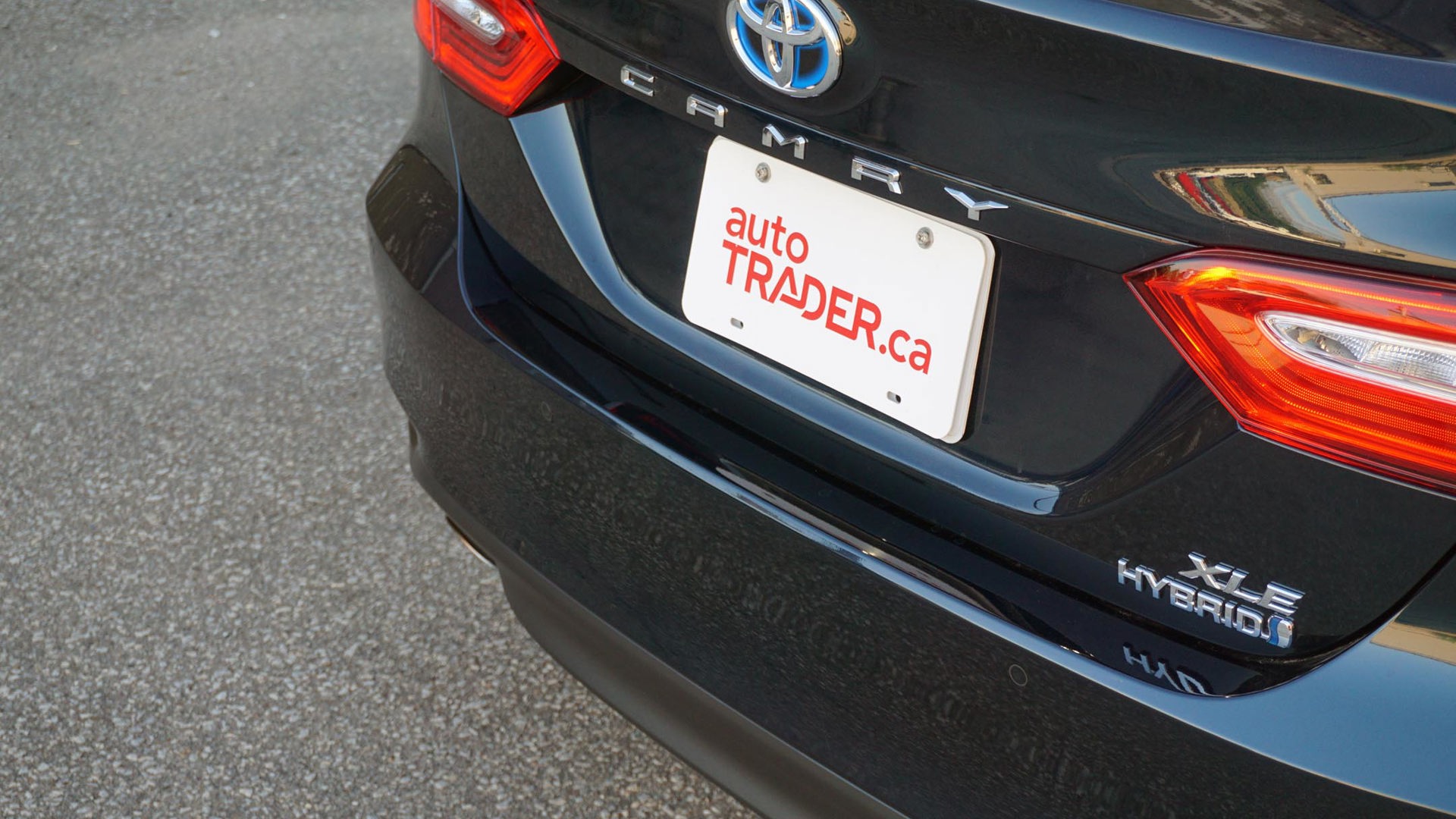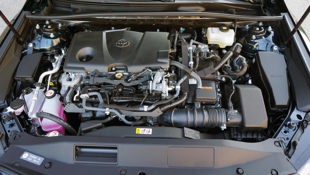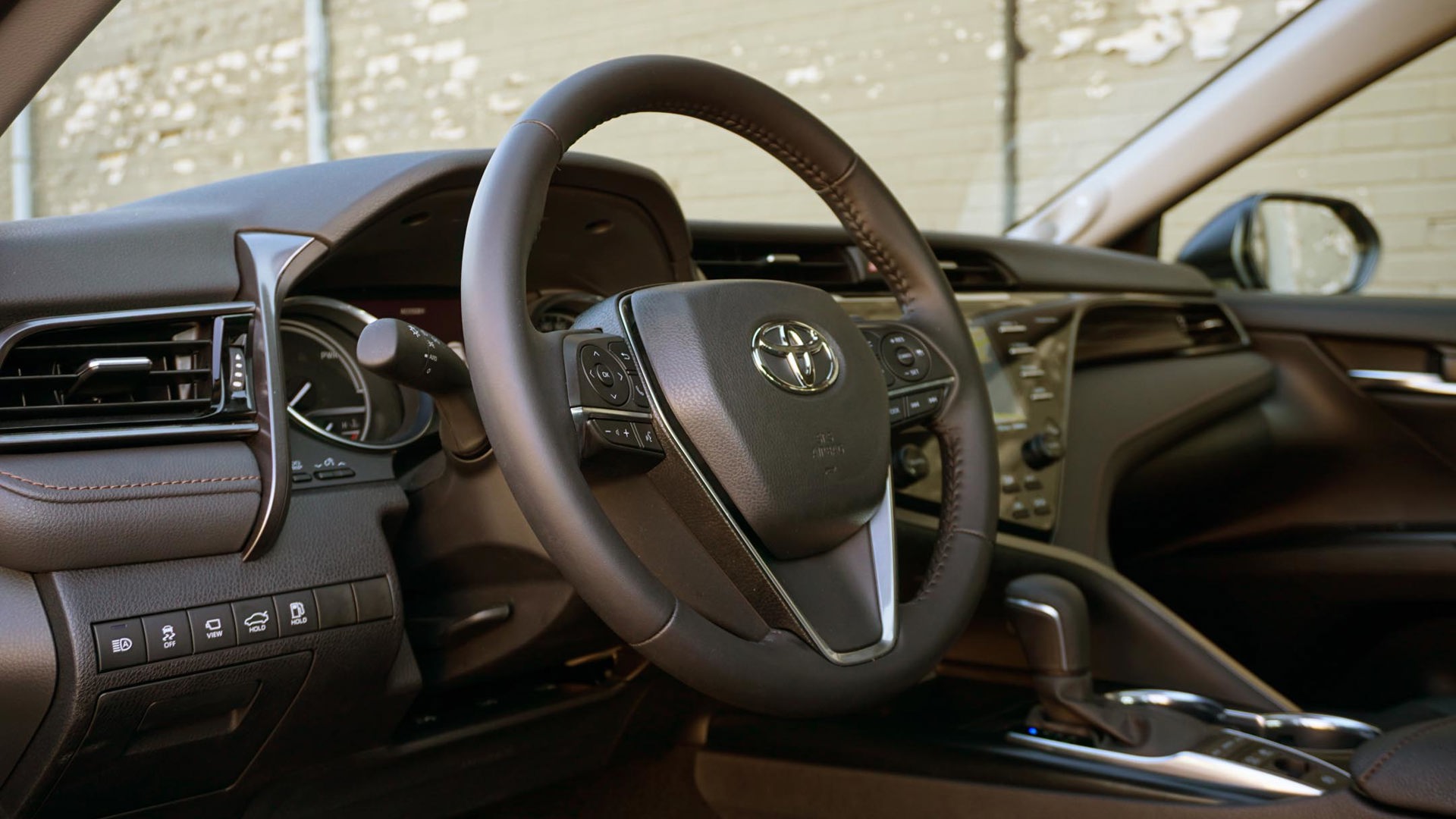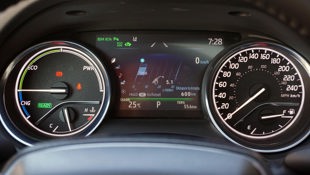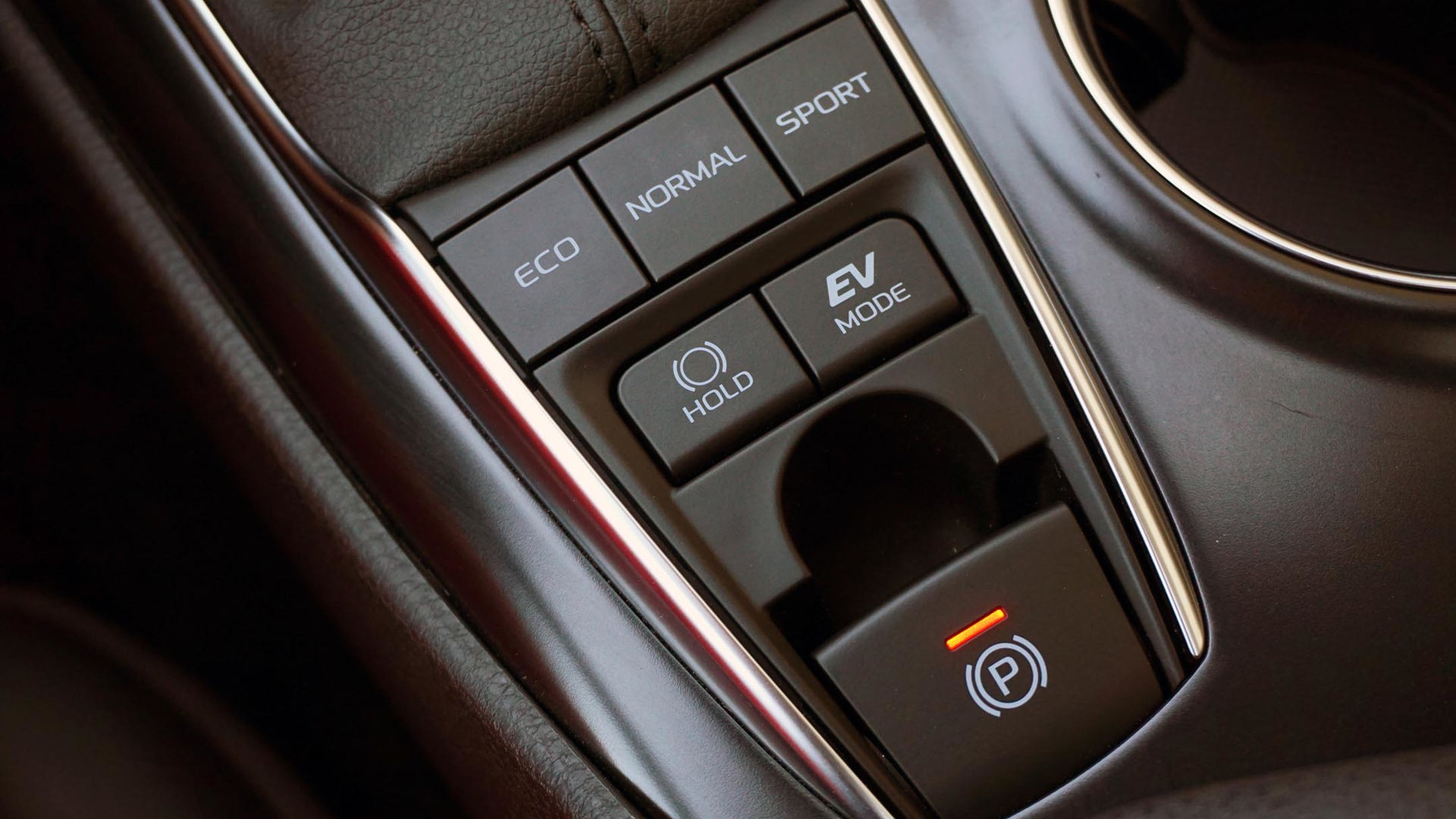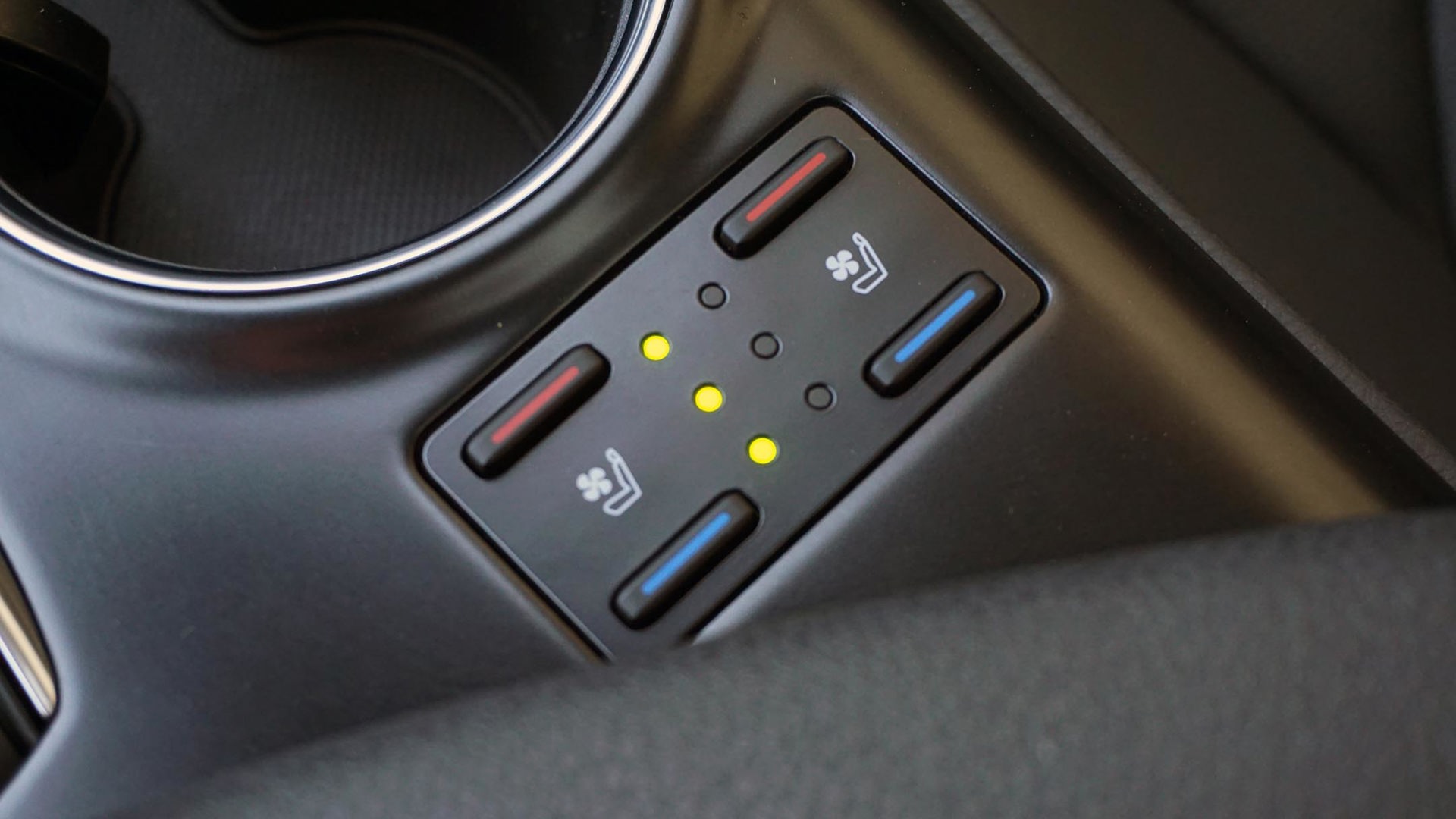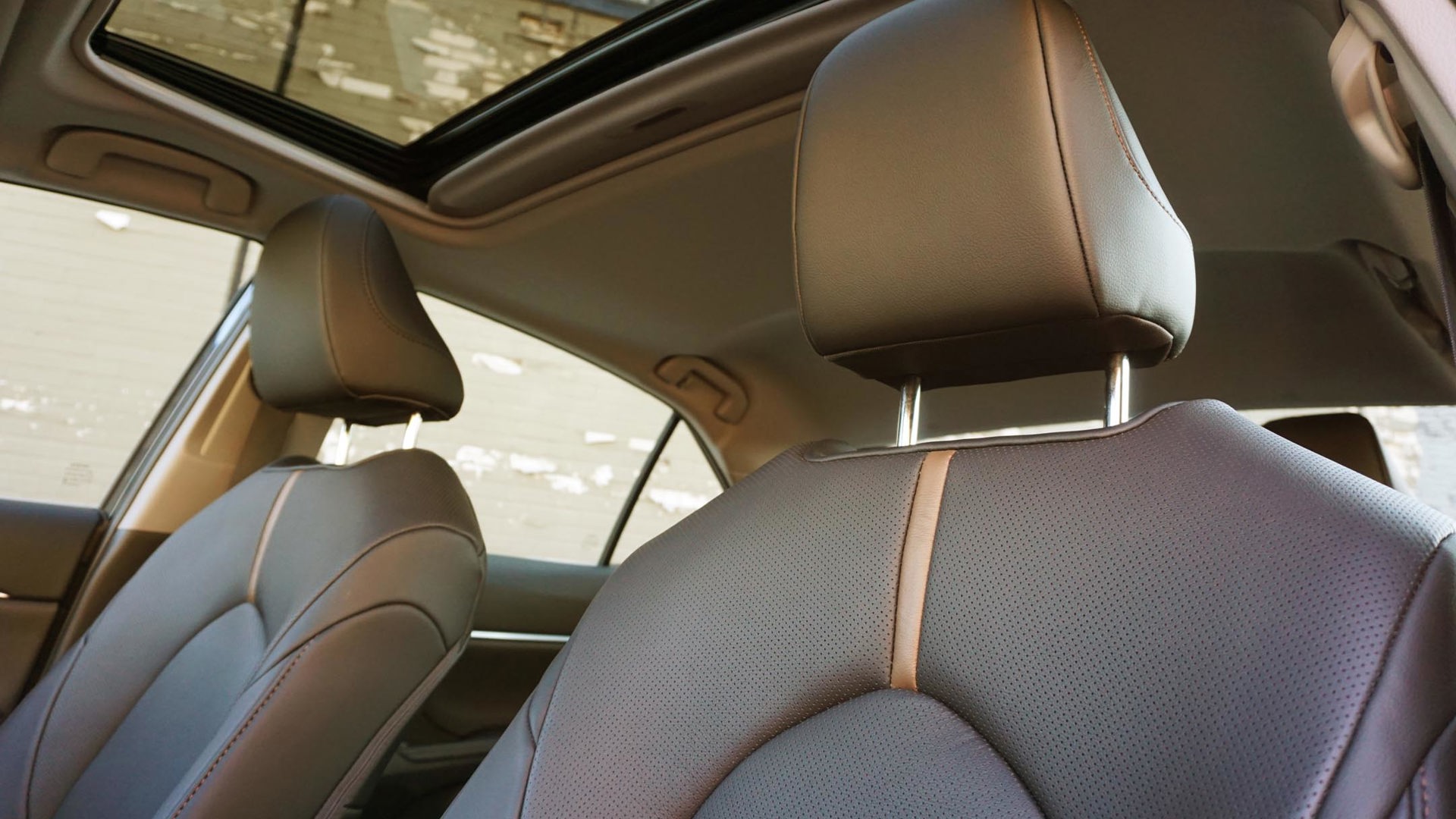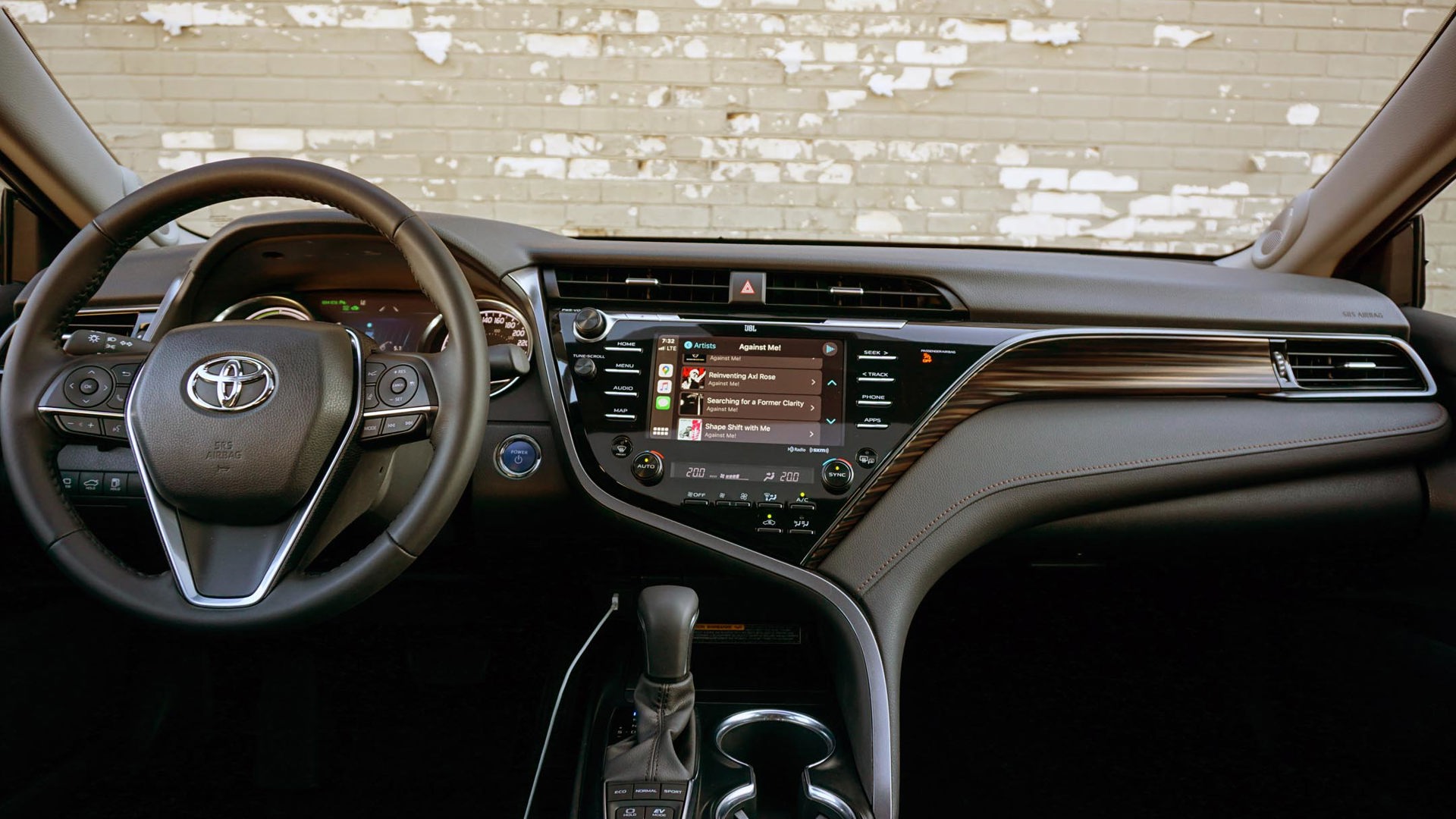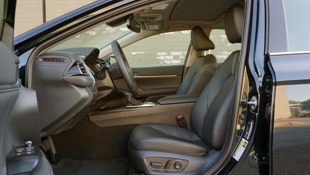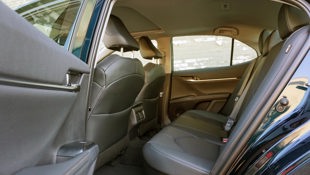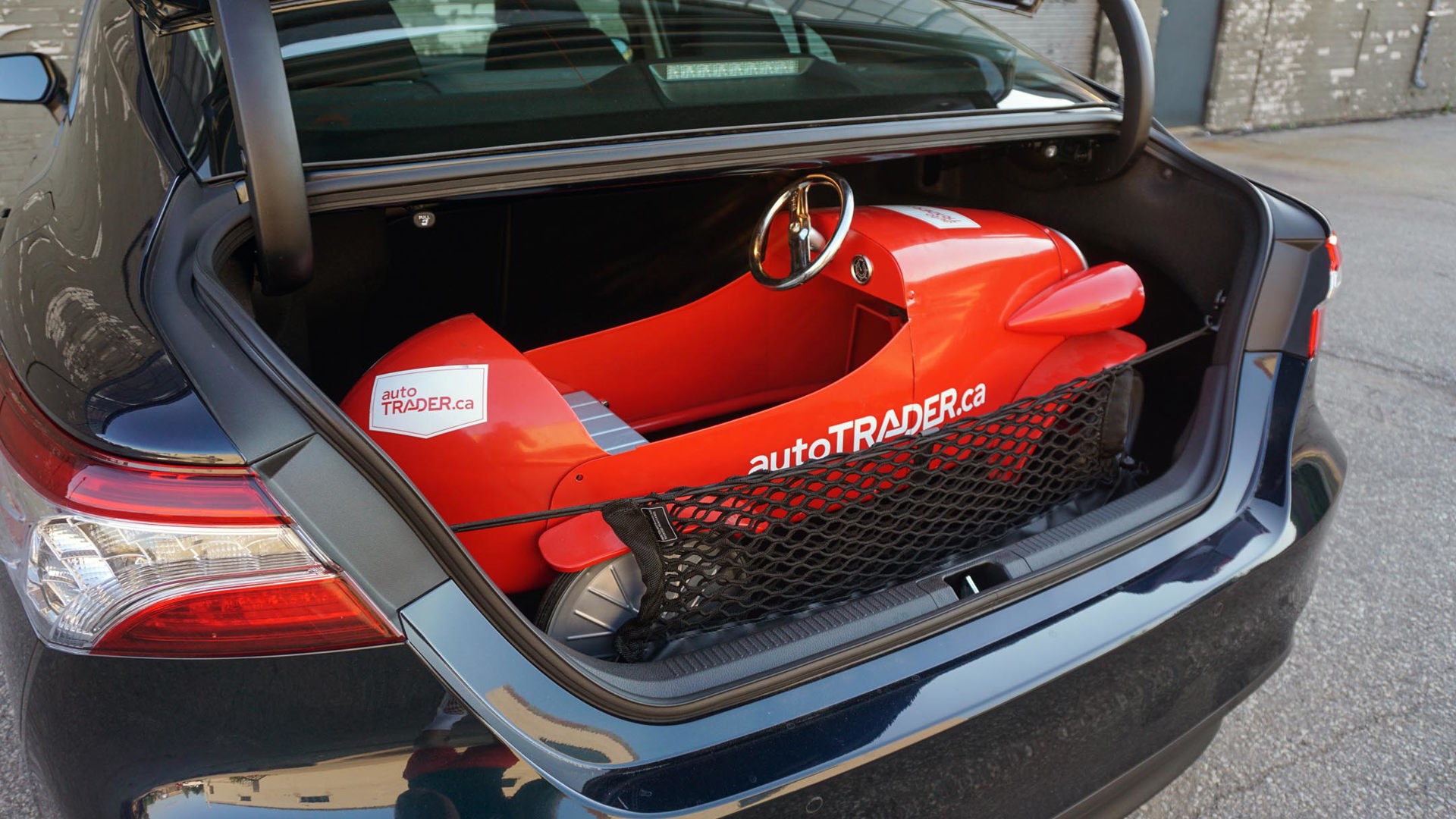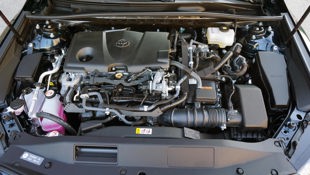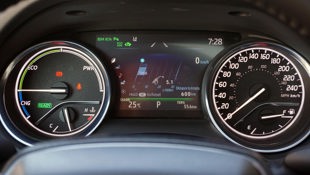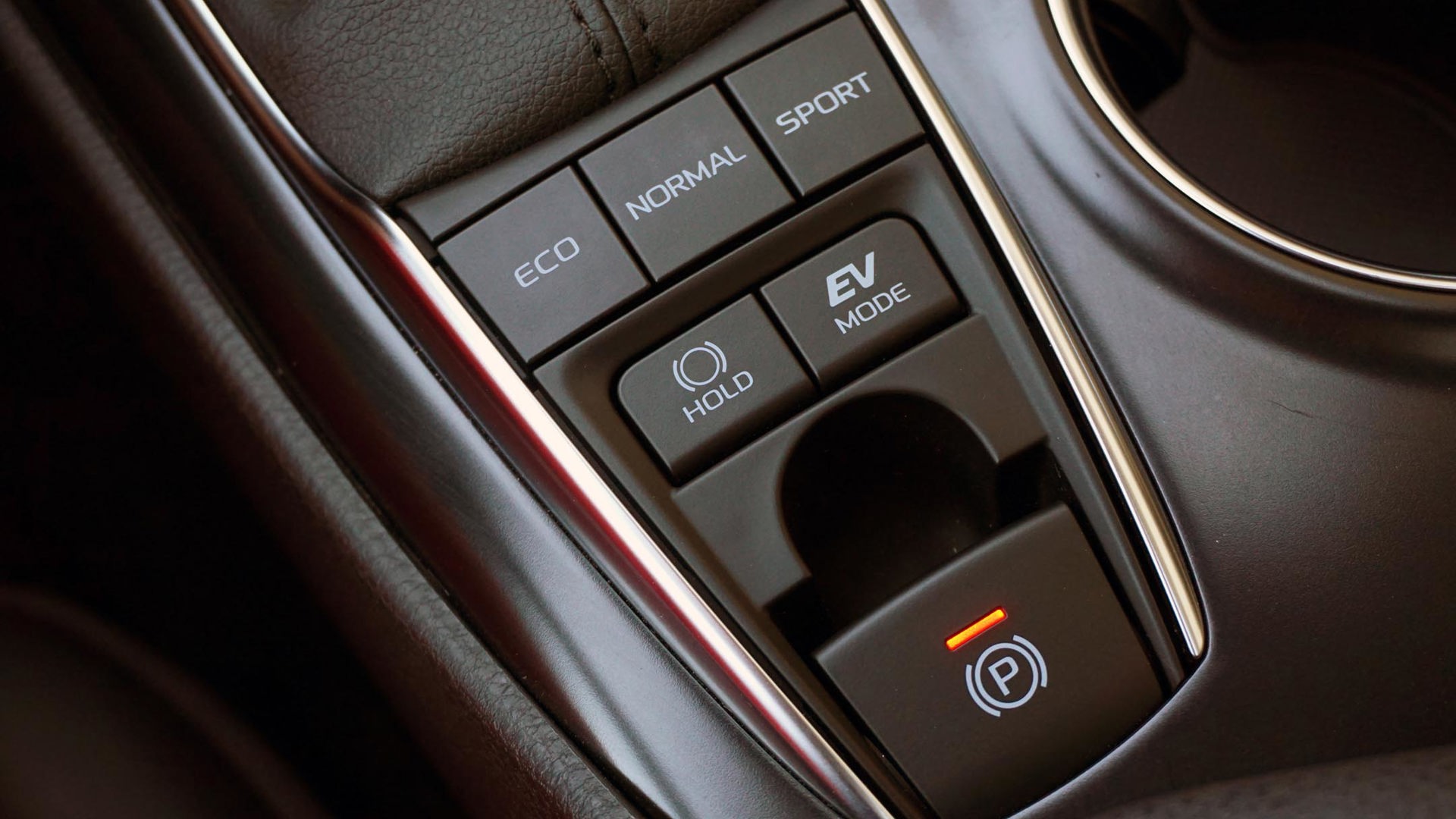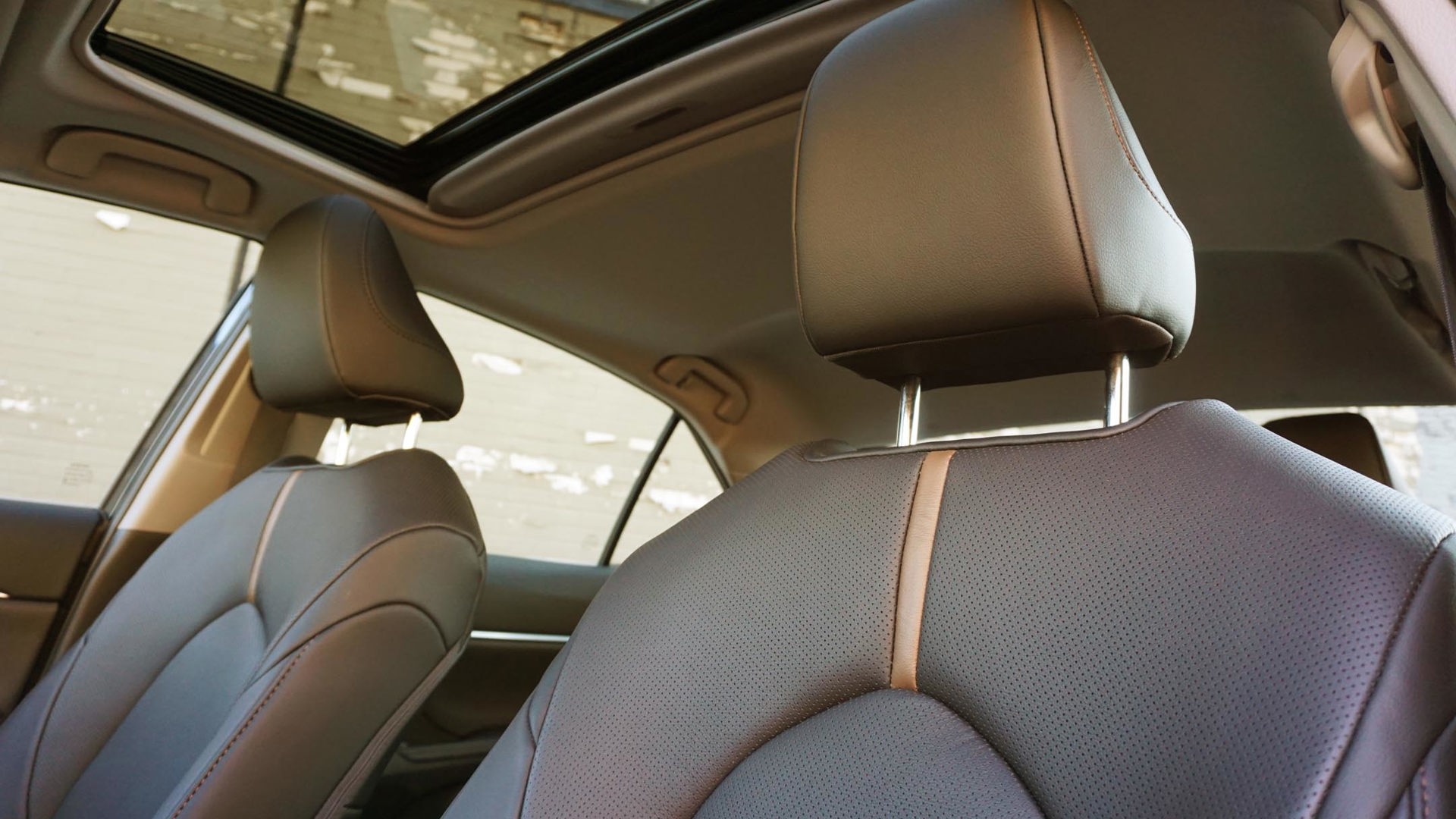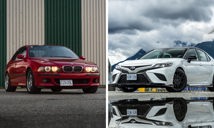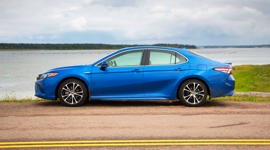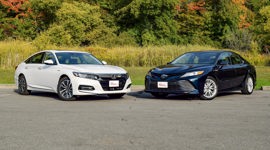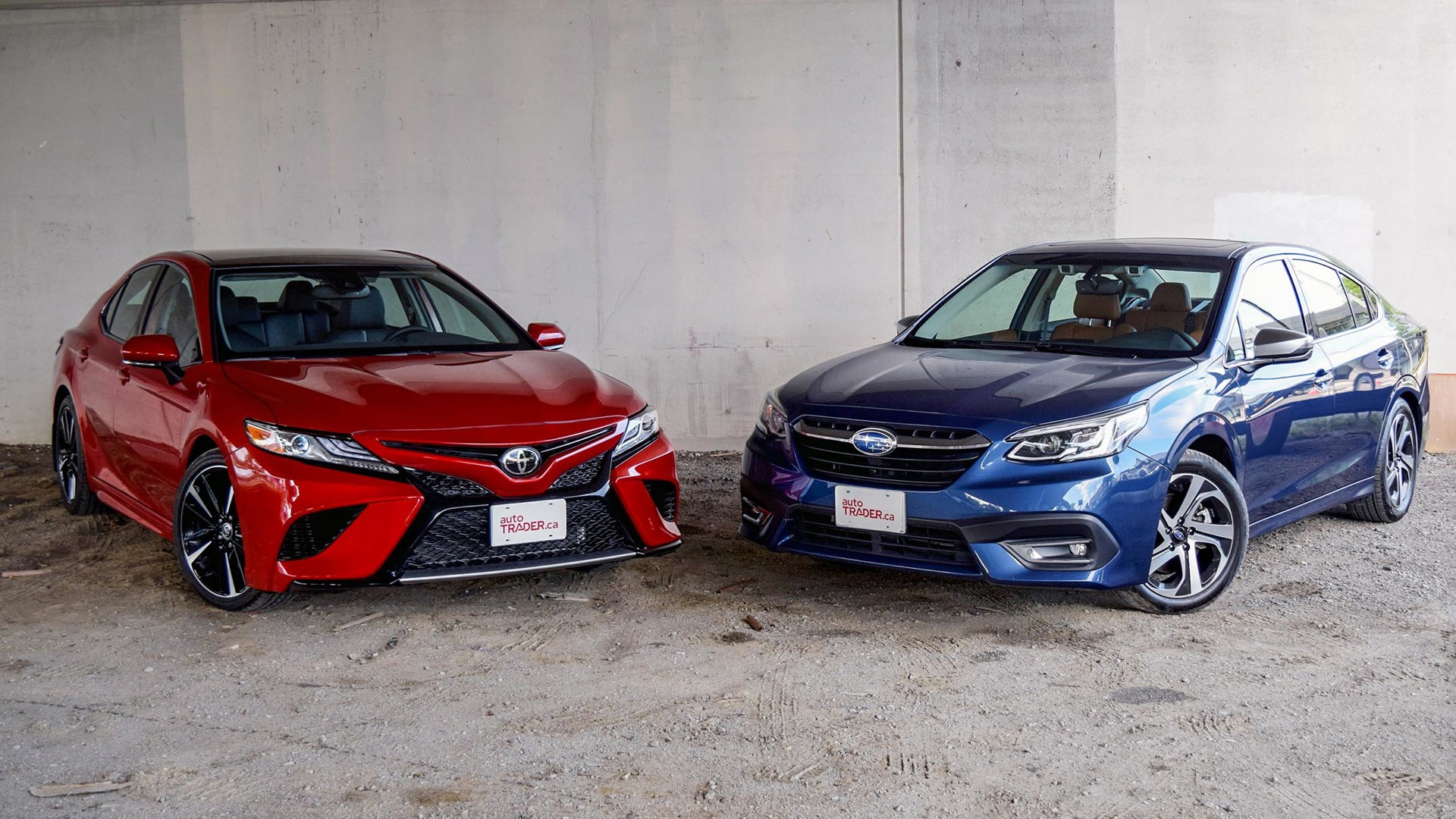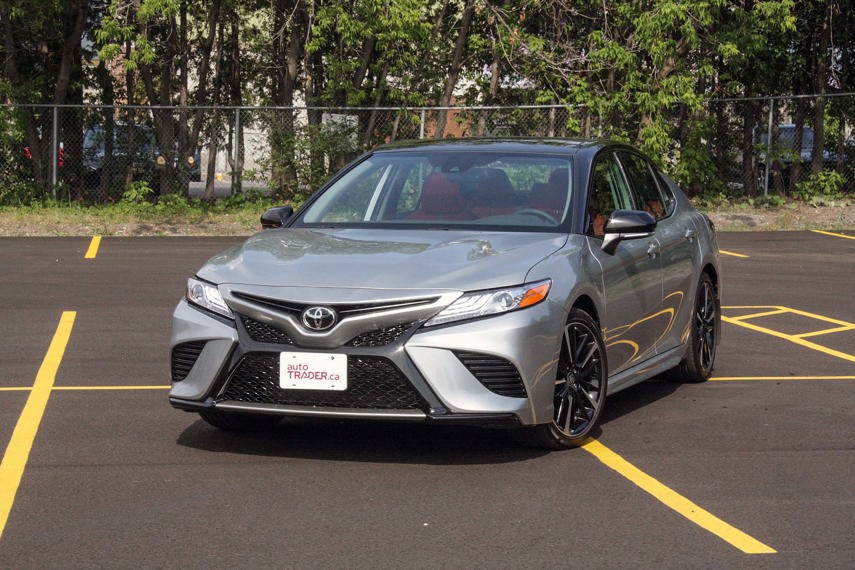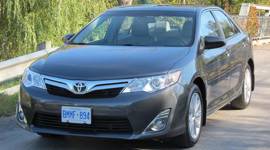 AutoTrader SCORE
AutoTrader SCORE
-
STYLING8/10
-
Safety9/10
-
PRACTICALITY9/10
-
USER-FRIENDLINESS8/10
-
FEATURES8/10
-
POWER9/10
-
COMFORT10/10
-
DRIVING FEEL10/10
-
FUEL ECONOMY9/10
-
VALUE8/10
As one of the most recognizable names in the automotive lexicon, the Toyota Camry isn’t going away anytime soon.
Sure, sedan sales are shrinking faster than George Costanza during a trip to the Hamptons, but this mainstay in the brand’s lineup will be one of the last to go – if it ever goes completely. It’s safe to assume the conventional version’s days are numbered, however, and when it’s gone it will be the gas-electric Toyota Camry Hybrid that’s left in its stead.
Unsurprisingly, there’s little to be desired here, with familiar levels of comfort and quality matched only by outstanding fuel efficiency and whisper-quiet operation. Meet the sedan of the mid-term future.
Power: 9/10
Toyota is no stranger to the hybrid game – the automaker practically invented it when it introduced the Prius two decades ago. The years since have seen Toyota stuff gas-electric powertrains into most of its models, and there’s no sign of it stopping anytime soon. In fact, if recent product announcements are any indication, the exact opposite is true.
Just look at the upcoming 2021 Sienna minivan and Venza crossover – both will be offered exclusively with hybrid powertrains when they launch later this year. While it’s unlikely the Camry will meet the same fate in the near future, don’t be surprised if it happens in the medium term. (A peek across the pond provides a glimpse into what that might look like, with the Camry offered only as a hybrid in the United Kingdom.)
Economies of scale and all that jazz means the hybrid version uses the same 2.5L gas engine found in all but V6-powered Camry models, making it a perfect match for the midsize sedan. It’s also probably the best application of this particular hybrid pairing, which features in the gas-electric RAV4 and Highlander, as well as the forthcoming Sienna and Venza.
Unlike that quartet, however, the Camry only comes in a front-wheel drive configuration. That means it forgoes the rear-mounted electric motor found in those four, sticking instead with an electric motor wedged under the hood next to the gas engine. It works in tandem with the gas engine to drive the front wheels and push energy into the 1.0-kWh battery pack for later use.
The four-cylinder generates 176 hp and 163 lb-ft of torque, while the 650-volt electric motor puts out 118 hp and 149 lb-ft of torque on its own. Combined system output is rated at a modest 208 net hp – a marginal uptick from the 203 hp and 184 lb-ft of torque made by the gas engine alone – and does well to motivate the 1,610-kg (3,549-lb) sedan.
Fuel Economy: 9/10
More important than the power the hybrid system generates is the fuel it burns. Or, more specifically, how little fuel it burns. Natural Resources Canada (NRCan) says it’s good for 4.9–5.1 L/100 km combined, depending on trim. That’s competitive with similarly sized hybrids on the market, and about 2.5 L/100 km better than front-wheel-drive Camry models powered by the same engine. Real-world results skewed closer to the XLE’s city-only rating of 5.3 L/100 km – still impressive for a sedan of the Camry’s stature.
Driving Feel: 10/10
The sheer excellence of the Camry’s gas-electric powertrain is impossible to ignore, with Toyota’s history of hybridization paying big dividends. Again, the automaker’s been at it for an awfully long time now, but the smooth and seamless operation of its hybrid drive system never ceases to impress.
Where the same gas engine can at times sound like it’s working hard to move the mass of the hefty Highlander Hybrid, this comparably svelte sedan never seems to burden the 2.5L. Deep stabs of the accelerator pedal produce barely more than a dull hum as the four-cylinder takes over the heavy lifting, managing passing and merging situations with ease. Under normal acceleration, the Camry is happy to take off under electric power, operating in pure silence for at least a few seconds before the four-cylinder comes back online.
Once cruising altitude is reached, the gas-electric powertrain works to keep the car moving by switching between the two power sources – or utilizing both – with little more than the gauge cluster cluing the driver in to what’s going on under the hood. The continuously variable transmission (CVT) that directs output to the front wheels is equally unobtrusive, while the brake pedal provides early and even stopping power – rare among hybrids that generally need more pedal travel before the brakes bite. The brakes are regenerative, too, so they put energy in the battery pack for later use.
Comfort: 10/10
The steering could be this Camry’s highlight, and it might very well be the best the segment has to offer – hybrid or otherwise. There’s some definite weight and resistance to the electric power-assisted system, yet it boasts a compliance that the Honda Accord lacks. Where the Camry’s key competitor errs to the sporty end of the spectrum, requiring very deliberate inputs to change direction, Toyota’s midsize sedan remains just a little more relaxed.
Coupled with supple suspension damping and supportive seats, the Camry is as comfortable as it is easy to operate. There are shades of the Chrysler 300 here in terms of ride quality, the Camry floating down the road like the shocks and struts have been replaced with jars of marshmallow fluff. Even the most punishing manhole covers proved no match for the Camry Hybrid during testing, the suspension soaking up everything thrown its way.
It’s disappointing that Toyota kept heated rear seats out of even this most expensive model, but heated front seats are standard in all three trims – LE, SE, and XLE – and they’re ventilated in the XLE shown. Also standard is a dual-zone automatic climate control system that continues the tradition among Toyota hybrids of blowing Arctic-cold air the instant it’s switched on. The top two trims add a heated steering wheel as well.
Tight panel gaps and good sound insulation means a quiet cabin, though some of the materials inside are substandard. Hollow plastic on the doors and polyurethane foam on the dash might cut it in the Corolla but they feel out of place here – especially given this Camry’s $43,000 pre-tax price tag.
Styling: 8/10
Some of those materials undermine this XLE trim’s standing as the priciest in the Camry Hybrid pyramid. Given the way in which the redesigned 2020 Hyundai Sonata Hybrid has elevated the segment in terms of interior aesthetics, this Toyota seems suddenly a step or two behind. While the grey and beige interiors available with a few of the Camry’s monochromatic exterior hues help liven the space up, the all-black aesthetic matched with the beautiful blue paint seen here makes for a rather understated space inside.
The exterior design isn’t exactly head-turning, but it’s certainly not as polarizing as the Sonata‘s styling – the redesigned sedan landed on autoTRADER.ca’s list of the ugliest cars on sale today – and has a kind of character few would expect of earlier Camry models. While the SE boasts a sportier look thanks to its unique grille and bumper designs, this XLE settles for a wider lower grille and multi-spoke 18-inch wheels to deliver its styling message.
Features: 8/10
The Camry isn’t quite as modern as the Sonata when it comes to amenities, but it’s decently equipped even in its most inexpensive form. There’s LED lighting front and rear – it moves to premium LED lighting in XLE guise – and standard alloy wheels outside, and all kinds of good stuff inside including an eight-inch touchscreen infotainment system, Apple CarPlay and Android Auto, push-button start, and heated front seats.
Also standard is Toyota’s outstanding advanced safety suite that includes forward automatic emergency braking with pedestrian detection, lane-keep assist, adaptive cruise control that works in stop-and-go traffic, and automatic high-beams. Blind-spot monitoring isn’t part of the package in the cheapest trim but is added to both the SE and XLE. The top trim also adds reverse automatic emergency braking and a bird’s eye monitor that utilizes cameras front and rear, as well as in each door mirror, to augment the excellent sightlines the sedan provides.
The top two trims also get a wireless phone charger, while the XLE adds a head-up display system, built-in navigation, leather upholstery, a power sunroof, and an upgraded nine-speaker stereo (six speakers are standard). While the head unit doesn’t grow in size, the screen in the gauge cluster grows to a seven-inch display.
User Friendliness: 8/10
The infotainment interface is approachable and easy to use, but the same can’t be said about the switchgear that surrounds the screen itself. In particular, the layout of the knobs used to control audio and climate control functions is among the most frustrating around.
Since the advent of the in-car radio, it seems, there’s been an unwritten rule: volume knob on the left, tuning on the right (reverse that order in parts of the world where the driver sits on the opposite side of the car). Why on earth Toyota decided to tightly stack both – along with one of the two climate control dials – on the left side of the screen defies logic along with muscle memory. Not once during a week of testing split between two autoTRADER.ca editors was the volume knob reached for at the first attempt. Graciously, steering wheel controls stick to a much more familiar format and include conventional buttons for the driver to easily adjust the volume of the stereo or flip through songs or station listings.
Safety: 9/10
The steering wheel controls also provide quick access to the extensive advanced safety systems, all of which work as intended. They also help the Camry earn a Top Safety Pick+ rating from the Insurance Institute for Highway Safety (IIHS), with good marks for front crash prevention and overall crash testing.
Practicality: 9/10
Despite the limitations that are inherent to sedans, the Camry is among the roomiest around. While the rear doors don’t open especially wide, which isn’t ideal for parents loading little ones into car seats, the four conventional seating positions will easily accommodate adults without worry. Rear headroom, too, is generous – there’s a good reason the Camry is a popular choice among cab drivers – and outduels just about anything else in the segment.
While the trunk isn’t as large as the Accord’s, it’s close at 428 L, matching the Subaru Legacy. Where the Camry does better than both of those cars is in the size of the trunk opening itself, and it’s one of the few midsize sedans on the market that swallows “Patty” the autoTRADER.ca pedal car with ease. In fact, there’s probably room for a pair of the classic tin toys back there.
Value: 8/10
When it comes to the RAV4 and Highlander, the choice to go hybrid is as easy as it is affordable. With a $2,000 price premium for the three-row SUV and one that ranges from $1,500–2,060 for the RAV4, the gas-electric powertrain is money well spent. (Making the Highlander Hybrid’s case even stronger is the $936 in annual fuel costs NRCan estimates it saves compared to the conventional version.)
For the Camry, the choice isn’t quite as clear. While the hybrid’s starting price of $31,550 before freight, fees, and taxes is reasonable, it’s nearly a $5,000 premium compared to the base version. Further muddying the waters is the gas-only all-wheel drive version between them, which is priced at $29,850 before extra charges are accounted for.
And on it goes throughout the trim range, with both the SE and XLE plagued by the same high price premium. It’s not that the tester seen here – out the door for $43,220 before tax – is overpriced compared to other hybrids like it; in fact, it’s priced competitively with both the Accord and Sonata. But considering the nearly $5,000 more it costs than a four-cylinder Camry XLE ($3,000 more than the gas-only all-wheel drive model), it’s not as cut and dried.
The Verdict
That cost conundrum is a shame, because there’s no doubt that the Camry Hybrid is the best version of Toyota’s venerable sedan on the market. Is it worth the price of admission? Assuming there’s no rush to amortize the extra spend, without a doubt. Those with an eye on their environmental footprint can also take solace in the gas-electric Camry’s reduced emissions, not to mention the money they’ll save at the pumps.
| Engine Displacement | 2.5L Hybrid |
|---|---|
| Engine Cylinders | I4 |
| Peak Horsepower | 208 hp net |
| Peak Torque | N/A |
| Fuel Economy | 5.3 / 5.0 / 5.1 L/100 km cty/hwy/cmb |
| Cargo Space | 428 L |
| Model Tested | 2020 Toyota Camry Hybrid XLE |
| Base Price | $41,350 |
| A/C Tax | $100 |
| Destination Fee | $1,770 |
| Price as Tested | $43,220 |
|
Optional Equipment
None
|
|
